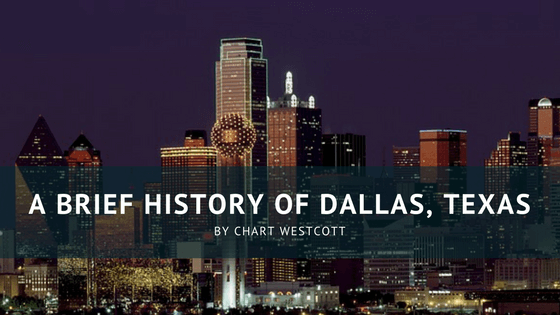The city of Dallas has a rich history that not many people are aware of. Nicknamed the “Big D,” it has been the birthplace of some of the greatest people and moments in American history, and it continues to be a breeding ground for excellence. Located on the Trinity River which is in the center of Dallas County in North Central Texas, the city of Dallas was founded by John Neely Bryan in 1839. Originally, Bryan was on a mission to establish a trading post for the Indians and other settlers. However, because of the advantages of its location, Bryan recognized it as the easiest river crossing location. So, in 1846, they formed Dallas County and assigned Dallas a temporary county seat. Then, through a vote in 1850, it became a permanent county seat over both Hord’s Ridge and Cedar Springs. In 1856, Dallas received its official town charter by the Texas legislature; Dr. Samuel Pryor became the first mayor.
During the early stages, Dallas proved to be a major service center for the rural areas. It had many amenities like a dry goods store, groceries, a drug store, a boot and shoe shop, and brickyards and saddle shops. It also boasted its own weekly newspaper called the Dallas Herald. The transportation in and out of the region caught the eye of savvy businessmen. It allowed them to attract the Houston and Texas Central in 1872 and the Texas and Pacific in 1873. All these acquisitions made Dallas one of the first rail crossroads in Texas. Plus, cotton, at the time, was the region’s premier cash crop, and Dallas had the ideal location Elm Street was the market for cotton.
As we entered the 1900s, Dallas, with a population of 42,638, was the leading book, drug, jewelry, and wholesale liquor market in the Southwest. It also maintained its status as the world’s leading inland cotton market and the number one manufacturer in the world of saddlery and cotton-gin machinery. As the century continued, Dallas only became larger with a population of 434,462 by 1950. It also became the third-largest technology center in the country with the rise of companies such as Ling-Tempco-Vaught (LTV) and Texas Instruments. However, the city of Dallas and the country as a whole experienced one of the most tragic events in history with the assassination of President at the time John F. Kennedy on November 22, 1963. The event occurred as Kennedy was riding through Dealey Plaza, mere yards from where John Neely Bryan first settled in 1841. In 1993, the city of Dallas recognized Dealey Plaza as a National Historic Landmark, Dallas’ second after Fair Park.
Today, Dallas’ population sits at over one million and the city has continued its status as a transportation hub for the Western US with its two major commercial airports: Dallas Love Field and the Dallas Fort Worth International airport (second largest airport in the nation).
